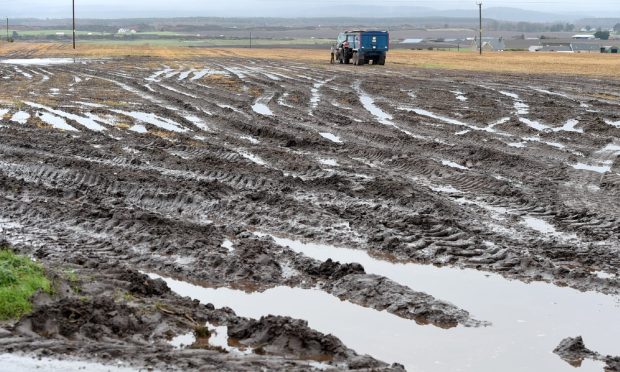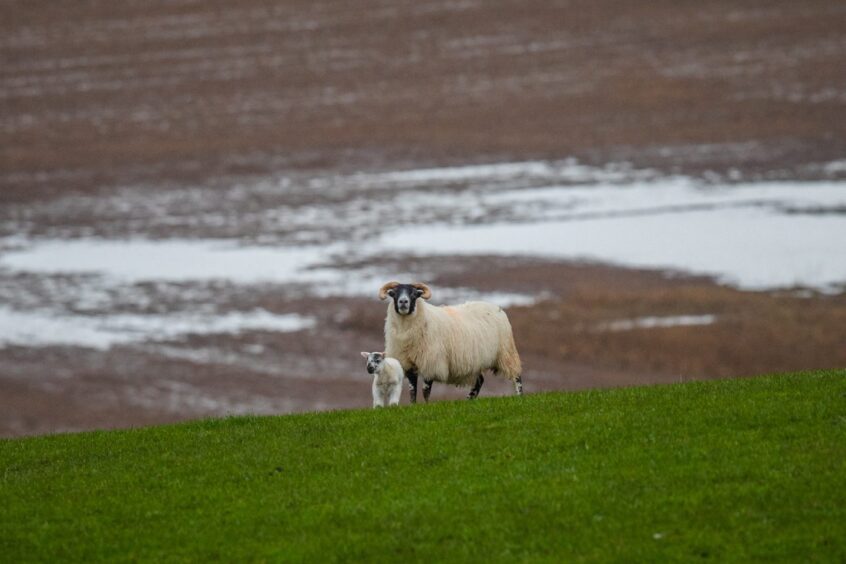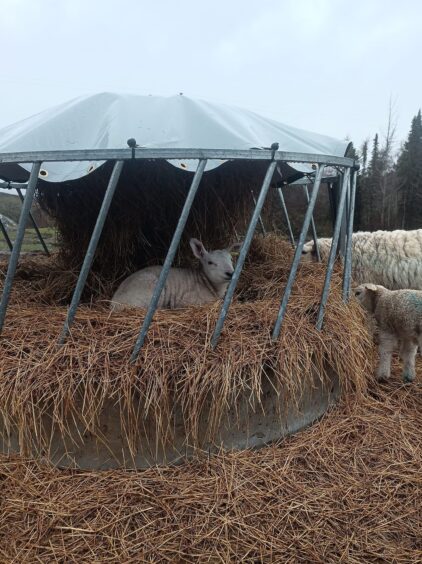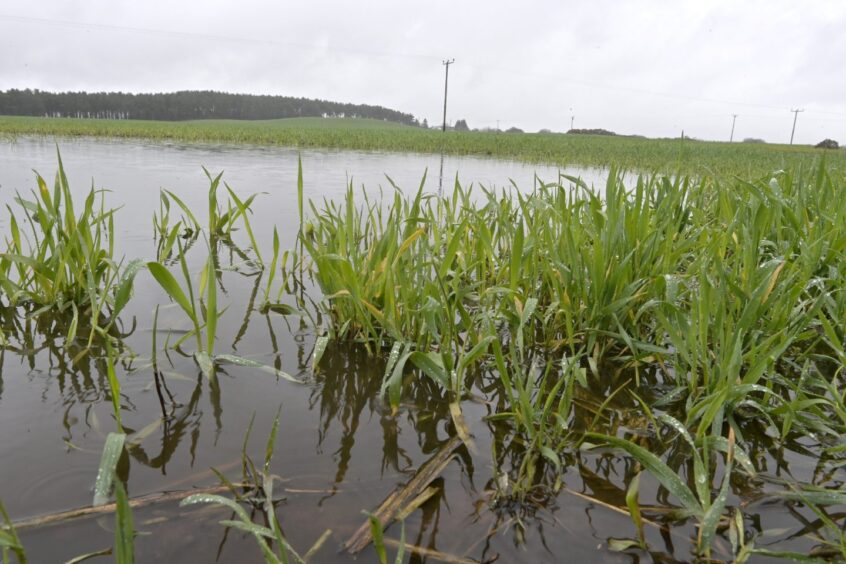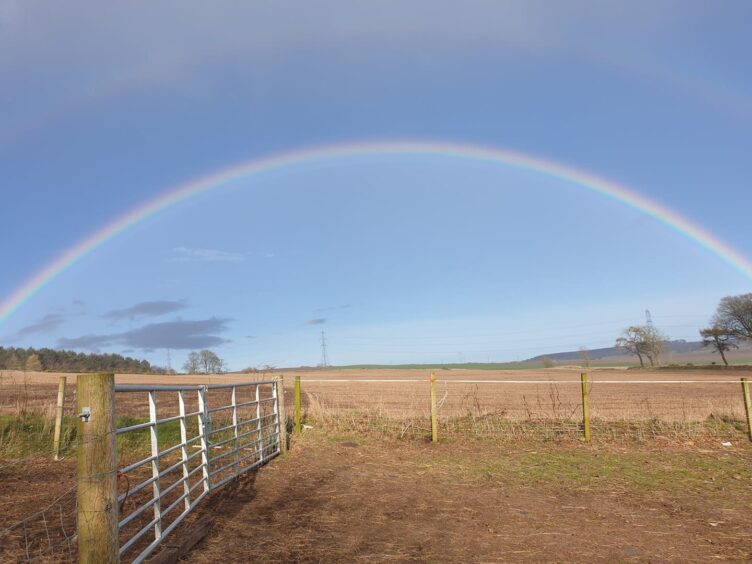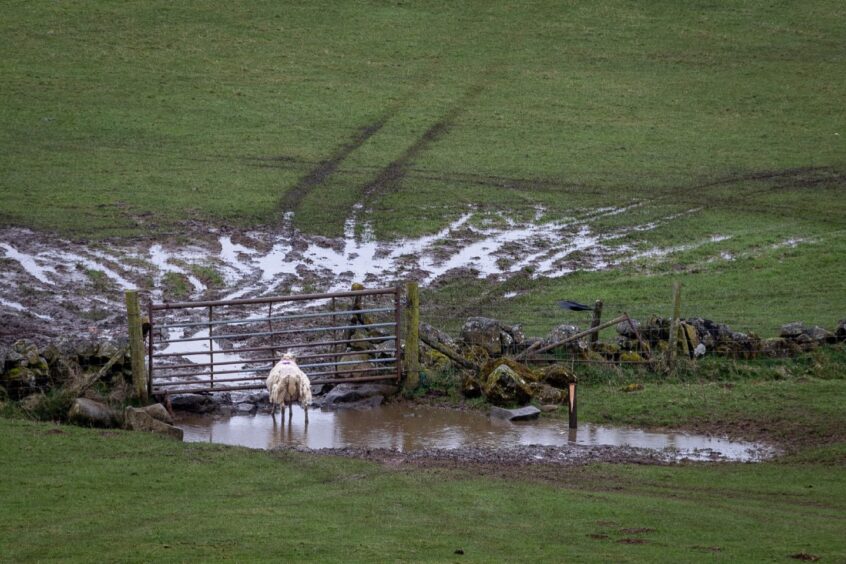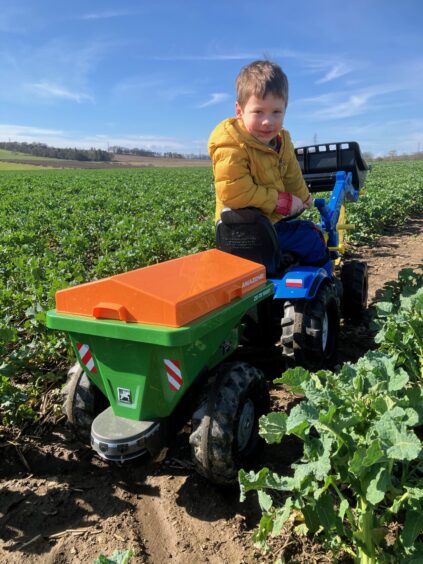Relentless rain across Scotland is taking its toll on farmers and crofters who are desperately trying to get seed in the ground and save newborn lambs.
Arable producers are still battling the conditions to finish ploughing in preparation for sowing, with some smaller growers contemplating not planting any crops this year due to timing and the bleak outlook of prices.
Those who managed to establish winter crops in September and October are also in desperate need of heat and dry weather for spraying and fertiliser application.
Livestock producers have been left with no option but to hold ewes and newborn lambs inside for longer, using up every free space for housing.
Some have already been housing cattle for longer this winter due to the wet back end and now they are in a position where they can’t turn out cows and calves, with bedding stocks starting to run dry.
One vet told The P&J they have seen rising cases of diseases throughout the winter season such as pneumonia in cattle and scour in calves because of the damp conditions in the sheds.
Last few weeks have been ‘absolutely horrendous’ for farmers because of rain
Beef and sheep farmer Charles Gordon from Lost Farm at Strathdon is in the midst of lambing 1,000 ewes – 200 of which are lambing outdoors and the majority indoors.
He described the last few weeks as “absolutely horrendous” on the back of a challenging winter, with 11-12ml of rain falling every day.
He said the biggest problem has been having to keep ewes and lambs indoors for three or four days to give them time to get strong enough to face the wet weather outdoors and that’s with lamb jackets on.
Charles grows 120 acres of spring barley and none of the land has had muck applied to it or been ploughed yet. He said he’s now running short on straw to bed cattle which can’t be put outside yet but said there is barely any extra straw around to buy.
Angus beef and sheep producer Willy Millar from Huntingfaulds, Tealing, has now lambed 80% of his 500 ewes but said the last few weeks had been a “right sair fecht”.
He said he would usually lamb some of the ewes outdoors but this year he brought them all inside to lamb.
Like most, Willy said his ewes were in really good condition in mid-January when they were scanned but since then the rain has worn them down and they’ve lost a good bit of condition.
‘Practically no crops sown yet this year’
He said there was practically no crops sown in the area yet, with arable boys at least three weeks behind on production. His brother nearby only just finished lifting the last of his tatties three weeks ago.
Shepherdess Stacy Tinney, who works on an estate at Tomintoul, said she had to source additional pens and make use of a neighbour’s shed for ewes with newborn lambs to give them an extra couple of days inside.
She said young lambs and calves have not had the chance to thrive yet and are spending most days huddled up in a corner.
The main lot of sheep on the estate – 1,500 head – start lambing outside this weekend so she has everything crossed that the weather will improve.
In the north, Caithness beef finisher and contractor Andrew Mackay of West Greenland, Thurso, said the rain in the area hadn’t been as bad as further south but it was still having a big impact on spring production.
He and the team still have much of the 1,200-1,400 acres of spring crop to sow but they did manage to get in their own 170 acres of feeding barley at home last week.
Andrew says he has recently witnessed some farmers in the area ploughing up fields of winter crops because there is simply nothing there to grow.
From a beef finishing perspective, he said store cattle were “dear enough” in relation to the price of prime cattle which has slipped back in the last fortnight.
Arable and tattie grower John Brown from West Adamston Farm, Dundee, still has all of his spring crops to sow and tatties to plant.
He said although they wouldn’t traditionally be planting tatties until April 12, the ground was not near dry enough and would probably need another fortnight yet.
John expects next year’s yields to be impacted.
He said he was fortunate most of the farmland was on a slope but some of his winter crops have rotted out on headlands.
Impact being caused by climate change
A Scottish Government spokesman said they recognised the ongoing impact adverse weather conditions are having on the industry – conditions they claimed are a direct result of climate change.
He said: “Despite ongoing budgetary pressures exacerbated by the UK Government, we have continued to provide support to farmers and crofters to help with flooding.
“In response to Storm Babet last year, we provided grants of up to £30,000 to farmers and land managers to help repair damaged flood banks. Support to help control flooding through natural flood risk management is still available through our Agri-Environment Climate Scheme.
“Eligible people affected by flooding can apply to their local authority for crisis funding through The Scottish Welfare Fund.
“This is on top of the £42 million that the Scottish Government provides annually to local authorities to fulfil their obligations in respect of flood risk management – and an additional £150m to supplement this funding over the course of this parliament.”
Meanwhile, across the border, it seems there are major issues with the newly announced fund. Numerous English farmers who have suffered catastrophic impacts are being told they are not eligible because some of their affected areas are more than 150 meters from ‘main’ rivers.
The NFU is outraged and says this includes members with 90% of their land saturated or underwater, and huge damage to buildings and equipment.
Help is at hand
While rural charity RSABI is on hand to speak to Scottish farmers free of charge 24 hours of every day, Scotland’s Farm Advisory Service – FAS has launched a new spring 2024 wet weather webpage for arable and livestock farmers.
Their advice line is open Mon-Fri 9am to 5pm offering 30 minutes of free consultancy advice for farmers.
2023 has been named by the Met Office as the 6th wettest year since its records began in 1836.
Much of north-east Scotland recorded more than twice the normal rainfall in December.
The start of 2024 has seen record-breaking wet weather.
With one month of meteorological weather left – the country had already seen 89% of the average rainfall for the season.
